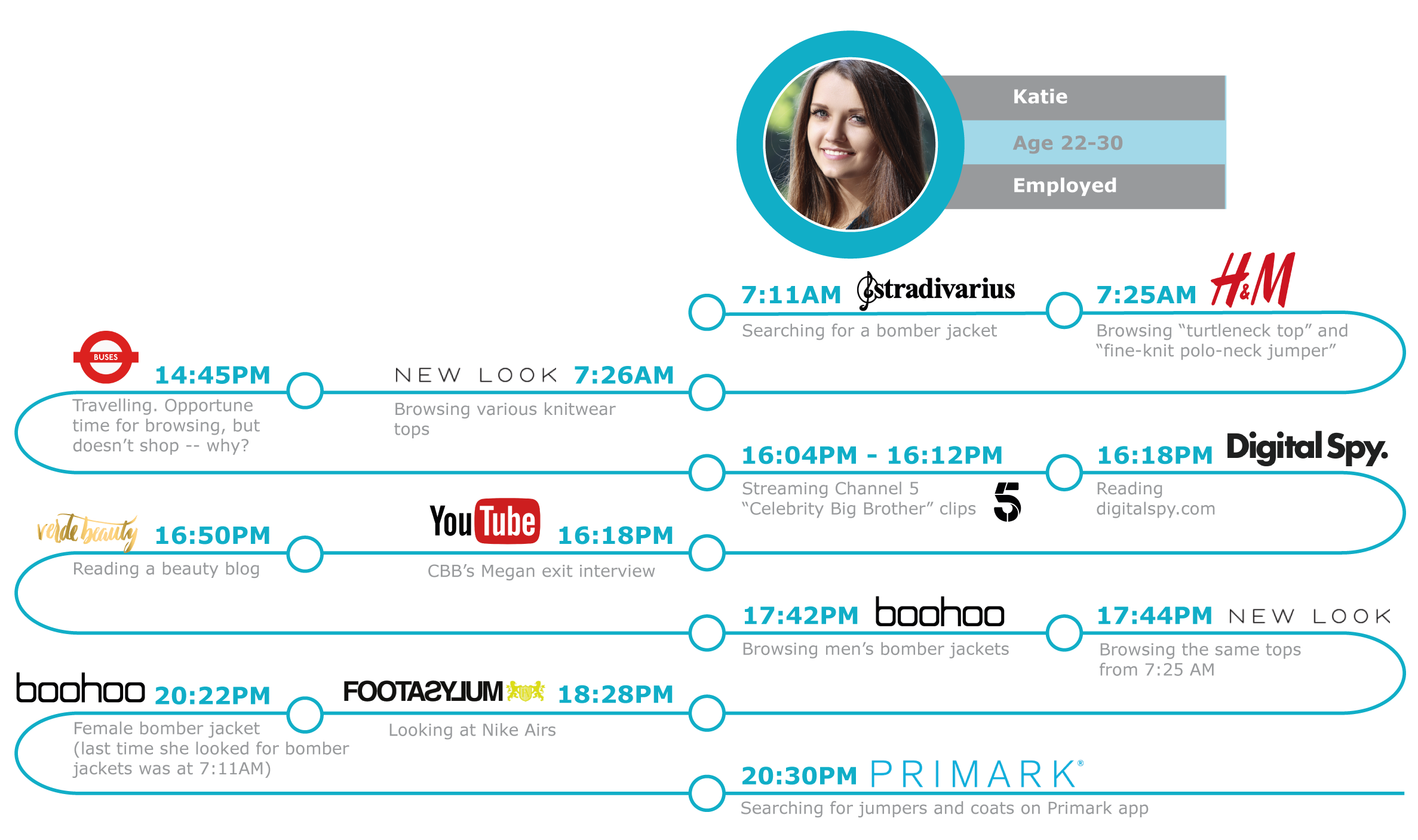A Day in the Life of a Fashion Shopper
Online research via computer or mobile device is increasingly common in a consumer’s purchasing journey, and is highly influential when shopping for goods in a range of categories. In fact, it is estimated that online research influences more than half of consumers’ in-store purchases.
Today, product research and the act of final purchase commonly take place through different channels. For example, consumers may use multiple devices, websites and apps to do their research, but then make their final purchase in store – or vice versa.
In this case study, we focus on a demographic which is highly influenced by research, and engaged in technology – millennials – and a product category which has an abundance of influential material available online – fashion – to take a look at a ‘day in the life’ of a millennial fashion shopper. We have analysed passively collected mobile data to examine, in detail, the path which one UK-based panellist took in making fashion purchases on one particular day. Let’s call her Katie.
This type of analysis is used by our clients to understand the full picture of their customers’ purchasing patterns, not just the slice which is available from the data they have about customer interactions with their own brand. This data helps brands to identify moments of receptivity to advertising messages, and also informs below the line marketing strategies.
Katie is an employed female millennial who is clearly interested in fashion, beauty and celebrity culture. Looking at her passive mobile data (illustrated below), we found that she used her mobile phone to specifically look for a bomber jacket and a jumper throughout the day, comparing various online stores and apps.

Katie started her morning by browsing the chosen items on the websites of Stradivarius, H&M and New Look. In this study, the respondant supplied us with some extra diary information about her daily habits, therefore we know that although the afternoon she checked a bus timetable in a bus app, she did not use her commute to continue researching the products.
Later in the afternoon, Katie decided to unwind by streaming Channel 5 on her mobile device, watching a celebrity video on YouTube, and reading a beauty blog and celebrity gossip via Digital Spy.
She spent her late afternoon and early evening researching clothing by browsing retail websites such as boohoo.com, New Look and Footasylum, as well as the Primark app.
From this example, we can see that there are various opportunities to target Katie and influence her purchasing decision — and in the best case scenario, entice her to buy. Event-based triggers could have been used to send surveys to ask Katie why she went to certain shopping sites rather than others, as well as her motivations, emotions and price elasticity – whatever else you need to know.
With this data and the additional knowledge collected on how millennials shop, we can then link this back into CRM database, customer segmentations and panel data for future use.



